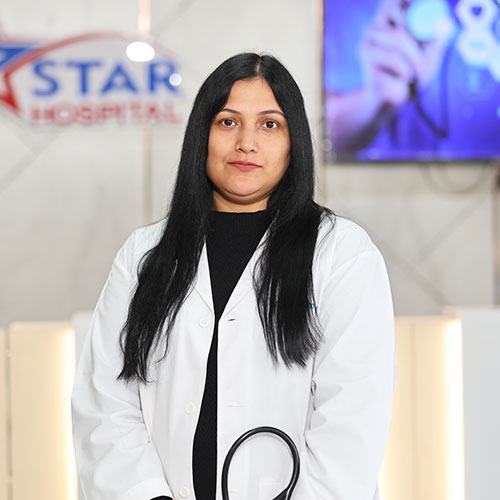Most women experience some kind of gynaecological problem at any point in their life. In most cases, the symptoms of gynaecological issues are ignored as it is perceived as normal menstrual cramps. However, resolving these issues with proper gynaecological treatments is essential to alleviate the risks of irreversible infertility and reproductive cancers.
The common gynaecological problems that one can face are endometriosis, PCOS, uterine fibroids, menstrual disorders, cervical dysplasia, and fallopian tube blockage. Some of the early signs of such issues that you must never ignore include back pain, irregular menstrual cycle, postmenopausal bleeding, spotting, and severe pelvic pain.
Effective Gynaecological Treatments for Resolving Reproductive Issues
1. Dilation and Curettage
Dilation and curettage (D&C) is one of the most effective gynaecological treatments, which is used to remove any abnormal tissue lining inside the uterus. Various uterine conditions such as uterine lining after an abortion as well as heavy bleeding can also be resolved with it.
Apart from treatment, D&C can also diagnose certain conditions including uterine polyps, endometrial hyperplasia, and uterine cancer. In some cases, this procedure can also be combined with hysteroscopy where a small instrument is inserted through the vagina to look into the cervical areas and uterus.
2. Pelvic Laparoscopy
Uterine fibroids, endometriosis, and the presence of scar tissues can be some of the reasons behind abnormal menstrual bleeding. Pelvic laparoscopy can be considered the best menstrual disorder treatment that can treat these disorders and can also remove scar tissue.
During this procedure, small incisions are made in the abdominal areas to do the required treatment, where it can also be used to do tubal ligation. In case you have severe pelvic pain, the doctor can perform this diagnostic procedure to determine the underlying causes, where causes behind infertility can also be detected.
3. Ovarian Cyst Removal
Ovarian cysts are fluid-filled sacs present in the ovaries that usually go away on their own. However, if these cysts have become larger and cause pain then the doctor may recommend certain gynaecological treatments. Ovarian cystectomy is the best cyst removal method that can either be an open or laparoscopic surgery.
Cancerous cysts can also be removed effectively with this procedure. Without proper treatment or removal of the abnormal growths, ovarian cysts can lead to severe gynaecological emergencies such as haemorrhage, torsion, and rupture. In some instances, it can also lead you towards infertility.
4. Hysteroscopy
Hysteroscopy is another effective treatment which allows a surgeon to look inside the uterus with the help of a hysteroscope. If you’re willing to undergo a thorough infertility evaluation and treatment then the doctor may recommend this treatment approach to determine the underlying cause behind recurrent pregnancy loss.
Along with this, an operative hysteroscopy can also play a role in removing any adhesions, polyps or fibroids. Apart from the beneficiary roles, hysteroscopy can also be associated with certain risk factors such as heavy bleeding, infection, cervical injuries, intrauterine scarring, and side effects of the anaesthesia.
5. Colposcopy
Colposcopy is a non-surgical treatment option that can be used by a gynaecologist to examine the vulva, cervix, and vagina precisely. This method is only done when the results of the Pap smear test have come abnormal. During this treatment procedure, a magnifying instrument known as a colposcope is inserted to diagnose the causes of cervical inflammation and genital warts.
Any significant precancerous changes in the reproductive organs are also determined by it. A biopsy can also be conducted along with the colposcopy, where a small tissue sample is collected for further laboratory testing to detect the probability of cancers.
6. Cervical Cryosurgery
While undergoing a regular Pap smear to detect gynaecological problems, the doctor may find some abnormal cervical cells that may indicate a serious health condition. In this stage, the gyanecologist may recommend a cervical cryosurgery for cervical ablation to freeze a specific section of the cervix.
Any changes noticed during the procedure may indicate the presence of precancerous cells which are then destroyed with cryosurgery. Removing the precancerous cells helps in reducing the risks of any reproductive cancers that may lead to concerning health issues and heavy bleeding.
7. Hysterectomy
Another effective surgical procedure that the doctor can perform to resolve gynaecological problems is a hysterectomy. This treatment involves the removal of the cervix and uterus to manage various conditions such as uterine prolapse, cancer, abnormal bleeding, and fibroids. A family planning advice that you must consider before undergoing this surgery is that after the removal of the reproductive organs, you won’t be able to conceive anymore.
To avoid any serious gynaecological complication, it is always recommended to book an appointment with a doctor to undergo period gynecologic check-ups. If any condition is detected then the doctor will recommend you some detailed diagnostic tests before planning the gynaecological treatments. Some of the most used diagnostic tests include pelvic ultrasound, Pap smear, and pelvic examination.

Meet Our Contributing Expert:
Clinical expertise and insights for this article were provided by Dr. Tamami Choudhary, MBBS, DGO a renowned Obstetrics and Gynaecologist. Delve deeper into their professional profile here for more comprehensive information.





